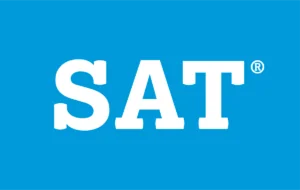Ever wonder what goes through a teacher’s mind when they’re asked to write a letter of recommendation? It’s a common part of their job, but it’s not always as straightforward as it seems. On one hand, teachers are eager to help their students succeed and move forward. On the other, writing these letters can be a time-consuming task that adds to their already busy schedules.

✅ AI Essay Writer ✅ AI Detector ✅ Plagchecker ✅ Paraphraser
✅ Summarizer ✅ Citation Generator
Key Takeaways
- Recommendation letters play a critical role in a student’s application, helping them stand out by showcasing their abilities and character.
- Crafting personalized recommendation letters is a complex and time-consuming task for teachers. It requires a balance between honesty and advocacy, aiming to reflect a student’s capabilities and potential effectively. Despite the challenges, teachers see it as a rewarding extension of their mentorship.
- Some teachers use creative methods to manage the demand for recommendation letters, such as having students draft their own letters for review or using form letters with personalized sections. These approaches streamline the process while maintaining the quality and personalization of recommendations.
Recommendation letters are a crucial part of a student’s application, whether for college, a scholarship, or even certain job opportunities. They provide a personalized account of a student’s abilities, character, and achievements, often from the perspective of someone who knows them well in an academic setting. Students seek these letters to stand out in a pool of applicants by showcasing endorsements from credible sources, like teachers, who can vouch for their potential and readiness for future challenges.
A personalized recommendation letter from a teacher can make a significant difference, as it contains insight into a student’s unique qualities, resilience, intellectual curiosity, and suitability for a particular opportunity. This personal touch can illuminate a student’s character beyond what standardized tests and grades might reveal.
From a teacher’s perspective, however, writing these letters can be complex, as they shouldn’t just praise students, but balance between honesty and advocacy. Teachers must accurately reflect a student’s capabilities while also highlighting their potential in a way that is compelling to admissions officers or employers. Moreover, these letters require time and thoughtfulness, adding to a teacher’s workload. That’s why not every teacher may not be as eager to give you a letter of recommendation. However, most of the time, it will be hard for them to say no. In that case, as the educators share themselves, they invent a special way of keeping both parties happy.
The Reward of Guiding High Achievers
For many educators, the process of writing recommendation letters for their top students is more than just a routine task; it’s a source of profound satisfaction. Teachers often express a deep sense of fulfillment when they assist these exceptional students in reaching ambitious goals, especially when targeting competitive schools.
“For the favorites, I absolutely love it. They usually take a lot longer because you have so many things to say about a kid, and you have to pick and choose.”
This enthusiasm stems from the opportunity to play a pivotal role in a student’s success. Teachers relish the chance to detail the remarkable qualities of their star pupils, despite the challenge of distilling a student’s many accomplishments into a single letter. Moreover, for teachers, these letters are an extension of their mentorship—a way to help mold the future of a young individual. The excitement and pride they feel when a student returns with an acceptance letter from a prestigious institution like Yale or Columbia is immeasurable. It’s moments like these that affirm their dedication to teaching and mentoring, making the intricate and time-consuming process of writing recommendation letters a rewarding experience.
“For my favorite students? Yes. It’s time-consuming, but if the student has put in good work in my classes, I want to reward that student. Helping them get ahead is one way of doing that. For generic students? Less so.”
The Complex Task of Crafting a Personalized Letter
Writing a personalized recommendation letter for a student is a task that carries its own set of complexities, especially when the student has a long list of achievements. This process goes beyond just a formal endorsement; it involves a deep dive into the character and potential of a student
“Most of my students are applying to a master’s program. In the last 3 weeks, I’ve been asked to write 10 letters. No, I do not enjoy it. The letters are a formality. The students who apply and ask for the letters are already the students with good enough GPAs. My letters serve almost no purpose unless I wrote a bad letter.”
The task requires a delicate balance of detailing a student’s academic strengths while also shedding light on their personal qualities. Teachers strive to paint a vivid picture of the student that goes beyond grades and accolades. They aim to capture the essence of the student’s character, their drive, leadership qualities, and how they interact in different settings outside the classroom
“I didn’t necessarily enjoy writing recommendations. They take time, and there’s a degree of stress in knowing that teacher recommendations could fail to help or might even hurt a promising student. It is not a trivial matter to write a good and honest letter of recommendation. Thus, I was honored to be asked but didn’t necessarily enjoy writing the letters. “
Crafting such a letter is time-consuming, demanding a significant investment of effort and thought. It’s a testament to the teacher’s commitment to their students’ futures. Each letter is a unique narrative, a story that aims to bring the student’s personality and potential to life for the reader. This process, while challenging, is a crucial part of a teacher’s role in guiding students toward their academic and professional aspirations.
“Letters of Recommendation are just another “housekeeping chore” that comes with teaching. I have a form letter that I use. I change a few sentences to personalize it for the student, then send it on its way. My biggest problem is that the students tend to ask me to write on the day that they need it, so I have to drop everything to do it. They’re annoying.”
Alternative Approaches to Recommendations

Some teachers, faced with the high demand for recommendation letters, however, have developed creative strategies to streamline the process. One approach involves students drafting their own letters for the teacher to review. This method not only lightens the teacher’s load but also provides a unique insight into how students view their own achievements and character
“I had a professor in law school, she was always very nice. Then I asked her for a letter of recommendation. “Of course I can! Such an honor. Now, when you you need it?” “In about 2 weeks.” “Ok, now go and write a letter yourself. Praise yourself through the roof, write about your accomplishments and especially about how you think I think of you.” One week later I showed up at her office. She pulled up what she had done – my original letter with a few things deleted and a few things added. She deleted the stuff I thought she felt, and added the stuff that she really felt. Details bout my accomplishments were kept intact.”
Another popular method is the use of form letters with personalized sections. This approach provides a standard structure for the letter, saving time and effort, while still allowing for customization to reflect individual students’ characteristics. These alternative methods represent a pragmatic response to the growing demands on teachers’ time, balancing efficiency with the need to provide genuine and supportive recommendations. By involving students in the process or utilizing form letters, teachers can maintain the quality and personalization of their recommendations, ensuring that each student’s letter is both sincere and effective in supporting their future.
The Main Point
Recommendation letters are a big deal for many soon-to-be university students. They act like a bridge helping students move from one big adventure to another. For teachers, writing these letters is a mix of happiness and hard work. They get to cheer on their students, sharing stories of their achievements and what makes them special. But, it’s not always easy. Teachers have to find just the right words, and with so many students, it can take a lot to handle. However, most take on this challenge with endurance as they feel like it’s their duty to make a difference in their students’ futures. So, to make this process a bit more joyful for them, think about the university you want to enroll in and ask your favorite teachers for the letters right at that moment. That way, they won’t have to deal with them in a rush, will likely be less annoyed with your request, and write a more honest and detailed review of your work.
Follow us on Reddit for more insights and updates.





Comments (0)
Welcome to A*Help comments!
We’re all about debate and discussion at A*Help.
We value the diverse opinions of users, so you may find points of view that you don’t agree with. And that’s cool. However, there are certain things we’re not OK with: attempts to manipulate our data in any way, for example, or the posting of discriminative, offensive, hateful, or disparaging material.